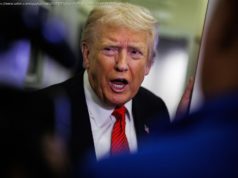The anniversary commemorations were designed to set aside tensions over independence for Catalonia. But politics crept in.
King Felipe VI of Spain led a ceremony in Barcelona on Friday to pay tribute to the 16 people killed in terrorist attacks there one year ago, an event that was also designed to show harmony amid a bitter dispute over independence for the region of Catalonia.
On Aug. 17,2017, a van swerved down Las Ramblas, a famous Barcelona boulevard, leaving behind a trail of bodies. One person was then killed in the driver’s getaway, and another in a second attack at a nearby seaside resort. More than 100 people were wounded.
The event on Friday included a flower-laying ceremony at a mosaic designed by Joan Miró, where the van used in the first attack came to a halt. Eight young people, each representing a different religion, read from “Devotions upon Emergent Occasions,” a work by the English poet and cleric John Donne, in the eight languages spoken by the victims. Several officials, including Queen Letizia, Prime Minister Pedro Sánchez and Quim Torra, the regional leader of Catalonia, attended. King Felipe bowed his head slightly as a sign of respect to some of the attendees — those who were wounded in the attacks and relatives of the victims.
It was a display of compassion and unity, but politics crept in.
Catalan society is deeply divided over the question of independence. Two months after the attacks, the central government in Madrid ousted the leader of Catalonia, Carles Puigdemont, after separatist lawmakers made a botched unilateral declaration of independence. Catalonia’s political situation remains fragile, despite the election of new leaders in both Madrid and Barcelona.
On Friday, Mr. Torra, the new Catalan leader, paid tribute to the victims of the attacks and to the police officers and emergency services workers who were called into action. He also made a reference to the “unfair imprisonment” of Joaquim Forn, a Catalan separatist lawmaker who is awaiting trial on charges of rebellion and sedition.
Even the presence of the king, who had criticized the independence drive, caused controversy. Last August, shortly after the attacks, he was booed after joining an antiterrorism march in Barcelona. That did not happen on Friday, although some antimonarchists managed to hang protest banners near the site of the commemoration — one saying, in English, “The Spanish king is not welcome in the Catalan countries.”
The attacks last August were orchestrated by a terrorist cell consisting mostly of young people of Moroccan descent who grew up in Catalonia. One of them, Younes Abouyaaqoub, drove the van down Las Ramblas, before escaping on foot through a food market and stealing a car, whose driver he also killed. Five other assailants were shot and killed by the police in the seaside resort of Cambrils during a separate car attack. After a four-day manhunt, Mr. Abouyaaqoub was shot dead in the countryside west of Barcelona.
In recent weeks, more photographs have been released showing the attackers’ preparations. They had planned to detonate a large bomb, but they were forced to switch plans the night before the Barcelona attack, after gas cylinders exploded and destroyed the house in the town of Alcanar that they had used as their bomb factory. Abdelbaki Essati, an imam who is believed to have been the leader of the terrorist cell, died in the explosion. The Islamic State later claimed responsibility.
In the aftermath of the attacks, politicians and police officials in Madrid and Barcelona traded accusations over why the intelligence services had failed to detect the terrorist cell. Mr. Essati and other members of the cell had occupied the house in Alcanar for several months, assembling a stockpile of bomb-making equipment.






